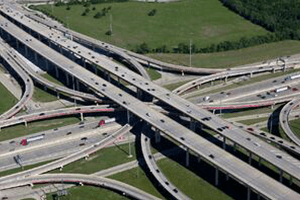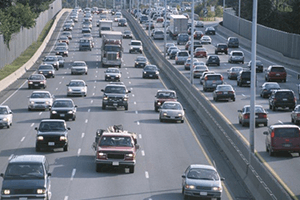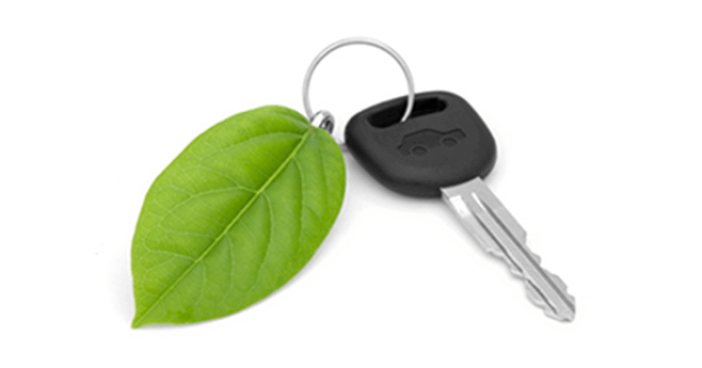In this day and age of green technology, there is a wide range of selection for those of us who are considering the purchase or lease of a new eco-friendly vehicle. Compared to the last decade, a recent look at the new 2014 vehicle lineup reveals a larger selection of fuel-efficient, hybrid and electric vehicles. Electric cars have engines that run on electricity and do not require gasoline, while Hybrids use electricity for shorter distances but also have gasoline for long drives and high speeds. These eco-friendly cars come with many advantages to the consumers, such as: Fuel costs, energy security, tax benefits, less greenhouse gas emissions, faster commuting times and power efficiency.
Below is a timeline that highlights the evolution of hybrid and fuel efficient vehicles:
- 1839 – In Aberdeen, Scotland, Robert Anderson built the first electric vehicle.
- 1870 – Sir David Salomon invented a car with a light electric motor and very heavy storage batteries.
- 1975 – A division of American Motors, AM General, began to deliver 352 electric vans to the U.S. Postal Service for testing. The U.S. Energy Research and Development Administration started a government program for the advancement of electric and hybrid technology in cars.
- 1996-1999 – General Motors established the Saturn EV-1, which was built to comply with California’s zero-emissions-vehicle mandate.
- 1999 – Honda released the first hybrid car to hit the mass market in the United States, the two-door vehicle called Insight. The Insight won numerous awards and received EPA mileage ratings of 61 mpg city and 70 mpg highway.
- 2000 – Toyota released the first hybrid four-door sedan available in the United States, the Prius. Today, there are currently four models of Prius available: Prius C, Prius, Prius V and the Prius Plug-in.
 More recently, Nissan came out with the Leaf, an all-electric vehicle that gets 126 miles in the City and 101 miles on the freeway with one full charge. Additionally, Chevrolet also developed the Volt, a hybrid vehicle that has an initial electric range of 38 miles and a range of up to 380 miles on a full charge and a full tank of gas.
More recently, Nissan came out with the Leaf, an all-electric vehicle that gets 126 miles in the City and 101 miles on the freeway with one full charge. Additionally, Chevrolet also developed the Volt, a hybrid vehicle that has an initial electric range of 38 miles and a range of up to 380 miles on a full charge and a full tank of gas.
While I was considering the potential purchase of a 2014 hybrid, it was surprising to discover that the hybrid car that I intended to buy no  longer qualifies for the High Occupancy Vehicle (HOV) decal program. A few years ago hybrids with yellow decals were permitted to travel in the HOV lane; however, with the progress in hybrid and electric vehicle technology over the past several years, the requirements needed to qualify for the HOV decal program have also evolved.
longer qualifies for the High Occupancy Vehicle (HOV) decal program. A few years ago hybrids with yellow decals were permitted to travel in the HOV lane; however, with the progress in hybrid and electric vehicle technology over the past several years, the requirements needed to qualify for the HOV decal program have also evolved.
California law permits a single-occupant use of HOV lanes by specific vehicles which use clean alternative fuels. Click here for a list of vehicles which currently qualify for the HOV lane decal program. The California Environmental Protection Agency’s (EPA) Air Resources Board has a program in which selected vehicles can use HOV lanes, with a single occupant in the vehicle, if the vehicle has a current Clean Air Vehicle decal that is issued by the California Department of Motor Vehicles (DMV). Currently, white and green clean air vehicle decals are being distributed by the DMV. White decals are slated to expire on January 1, 2019. The DMV will issue these decals to an unlimited number of vehicles that qualify. To qualify for one of these decals, the vehicle must be a Federal Inherently Low Emission Vehicle (ILEV). In other words, this type of vehicle runs solely on battery, hydrogen fuel cells, or natural gas and is a zero-emission vehicle.
 Green decals are also slated to expire January 1, 2019. However, these decals are only available to the first 40,000 applicants that either purchase or lease vehicles that meet the State’s transitional zero emission vehicle (TZEV) requirement. All clean air vehicle decals must also be reauthorized for use by the Federal Highway Administration. If re-authorization is not granted, the Clean Air Vehicle decal program may end sooner than state law currently allows. Yellow carpool decals, expired in 2011 because the California legislature limited the time of this early hybrid vehicle program to promote the development of a newer plug-in hybrid and other zero emissions technologies.
Green decals are also slated to expire January 1, 2019. However, these decals are only available to the first 40,000 applicants that either purchase or lease vehicles that meet the State’s transitional zero emission vehicle (TZEV) requirement. All clean air vehicle decals must also be reauthorized for use by the Federal Highway Administration. If re-authorization is not granted, the Clean Air Vehicle decal program may end sooner than state law currently allows. Yellow carpool decals, expired in 2011 because the California legislature limited the time of this early hybrid vehicle program to promote the development of a newer plug-in hybrid and other zero emissions technologies.
When considering a vehicle to use in HOV lanes, be sure to verify that the vehicle you intend to buy qualifies for the most recent standards in order to be eligible for a clean air vehicle decal. Doing your part to help the environment stay greener is one of the obvious reasons for buying an eco-friendly car. But a switch to an eco-friendly vehicle will give you more miles to the gallon while also reducing your carbon footprint.
Contact FirstCarbon Solutions (FCS) to see how we can help you optimize your resource use, improve your operational efficiencies, and maximize your profit in energy and environmental management solutions including providing you with options for company car fleets.





